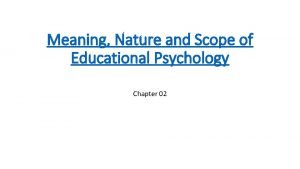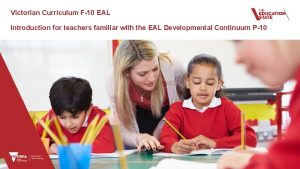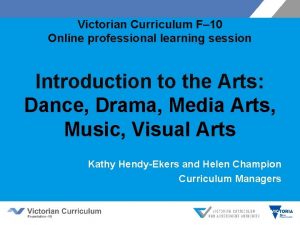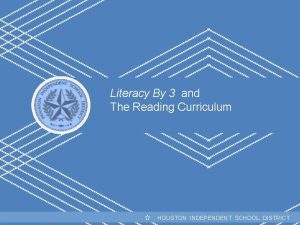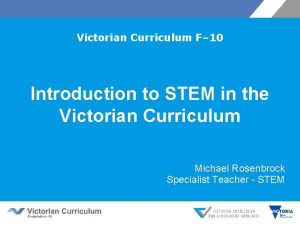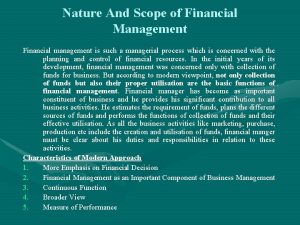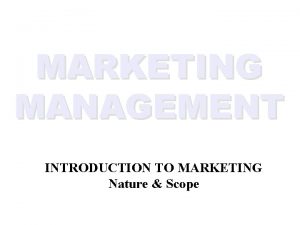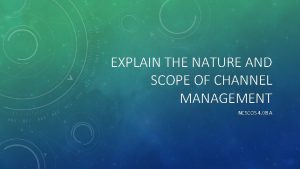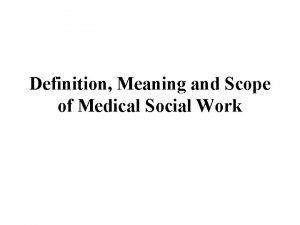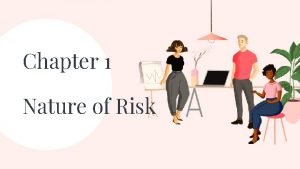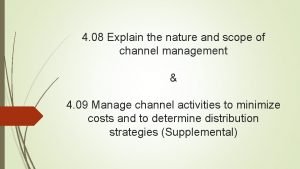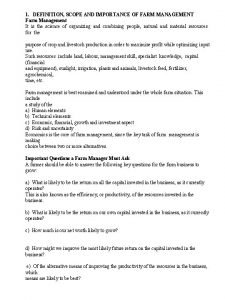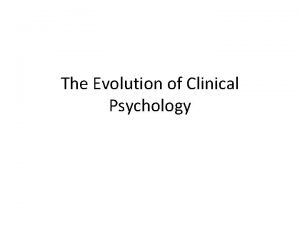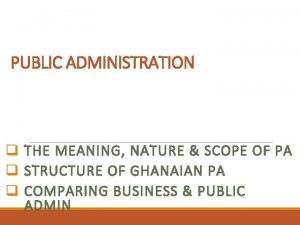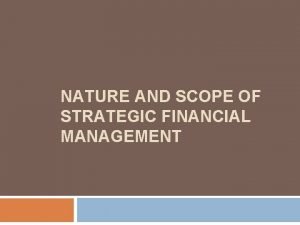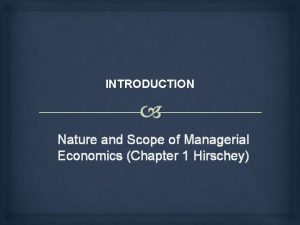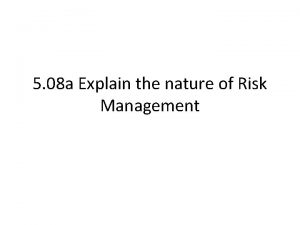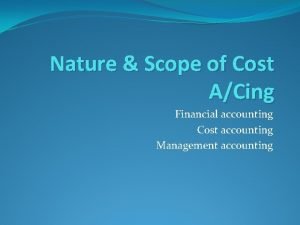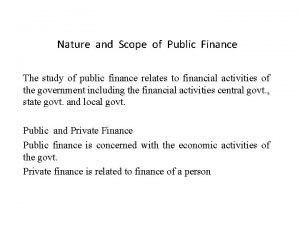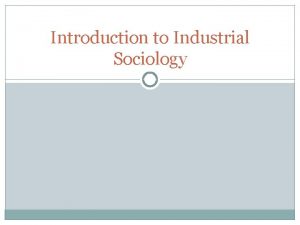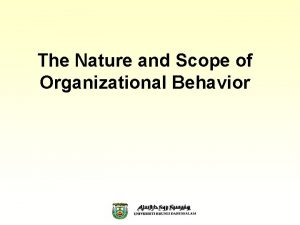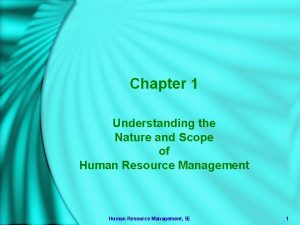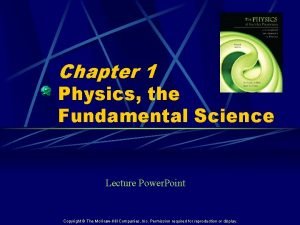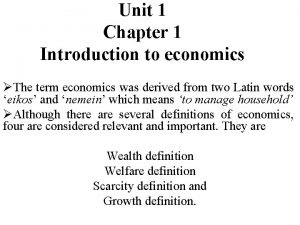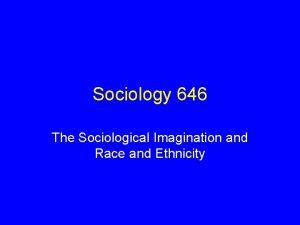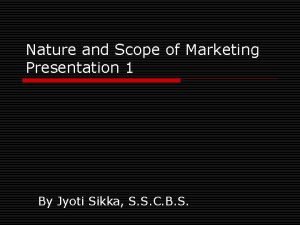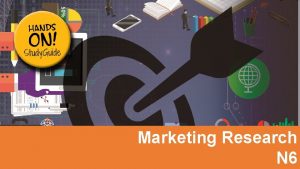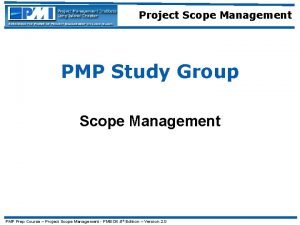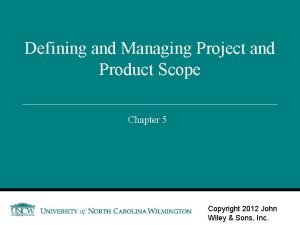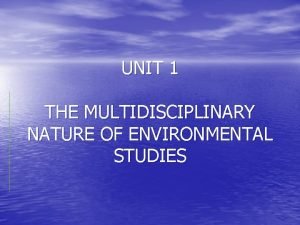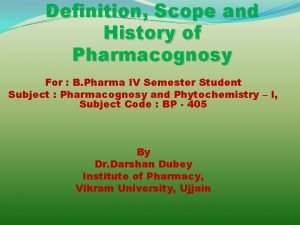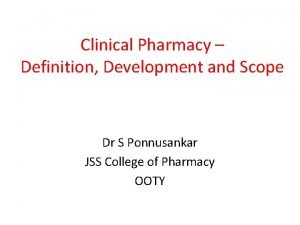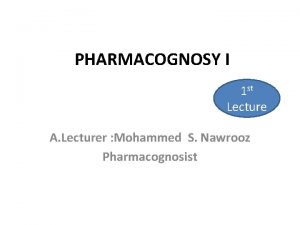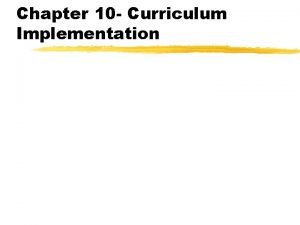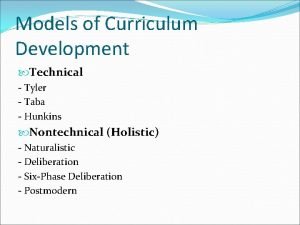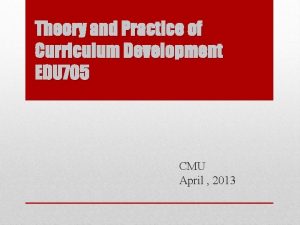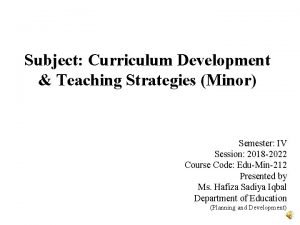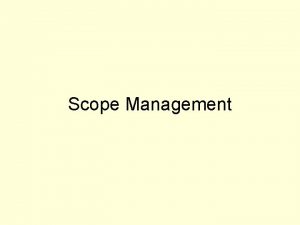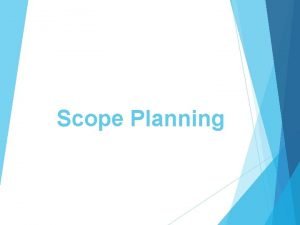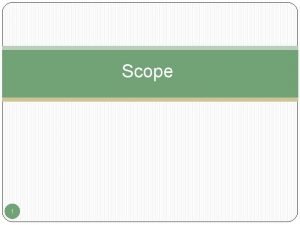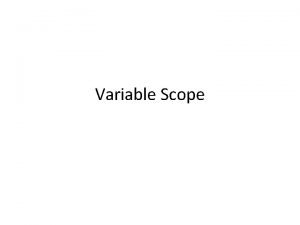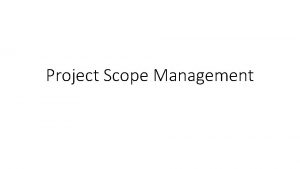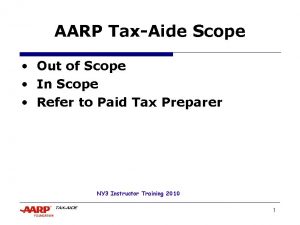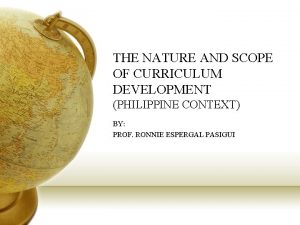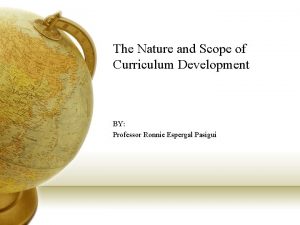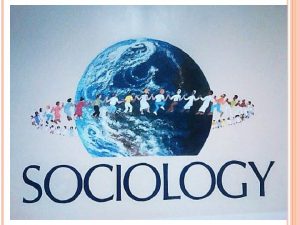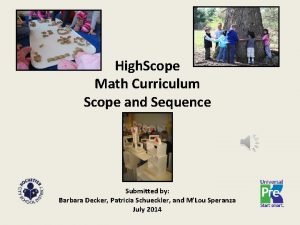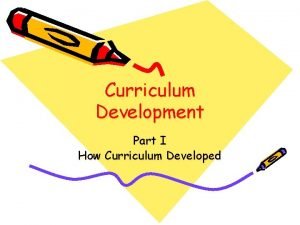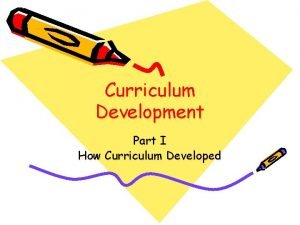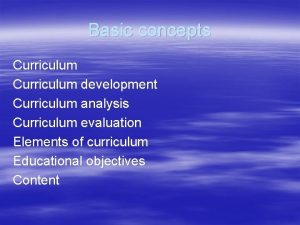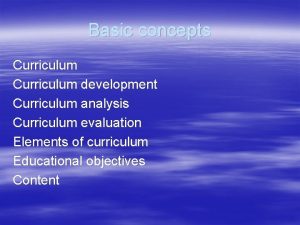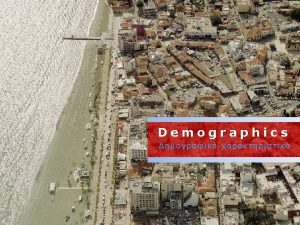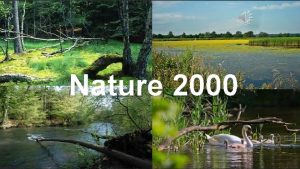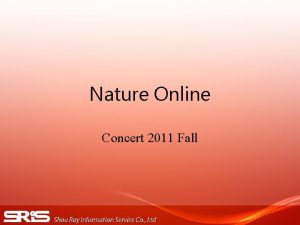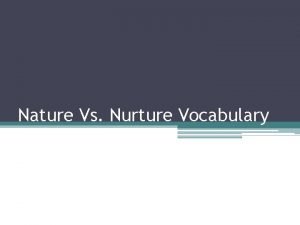THE NATURE AND SCOPE OF CURRICULUM DEVELOPMENT Definitions


















































































- Slides: 82

THE NATURE AND SCOPE OF CURRICULUM DEVELOPMENT

Definitions of Curriculum • Some authors define curriculum as the total effort of the school to bring about desired outcomes in school and out-of-school situations. • It is also defined as a sequence of potential experiences set up in school for the purpose of disciplining children and youth in group ways of thinking and acting.

Definition(s) of Curriculum • Curriculum – is a structured set of learning outcomes or task that educators usually call goals and objectives. ( Howell and Evans 1995) • Curriculum – is the “what” of teaching. • Curriculum – listings of subjects to be taught in school.

CURRICULUM • A document which describes a structured series of learning objectives and outcomes for a given subject matter area • Includes a specification of what should be learned, how it should be taught, and the plan for implementing/assessing the learning

Curriculum Planning • A curriculum Plan is the advance arrangement of learning opportunities for a particular population of learners. • A Curriculum guide is a written curriculum.

Curriculum Planning • A Curriculum Planning is the process whereby the arrangement of curriculum plans or learning opportunities are created.

Curriculum Planning • It is the process of preparing for the duties of teaching, deciding upon goals and emphases, determining curriculum content, selecting learning resources and classroom procedures, evaluating progress, and looking toward next steps.

Curriculum Development • It is defined as the process of selecting, organizing, executing, and evaluating learning experiences on the basis of the needs, abilities and interests of the learners and the nature of the society or community.

Curriculum Laboratory • Curriculum laboratory is a place or workshop where curriculum materials are gathered or used by teachers or learners of curriculum. • Resource Unit is a collection or suggested learning activities and materials organized around a given topic or area which a teacher might utilize in planning, developing, and evaluating a learning unit.

TWO SCHOOLS OF THOUGHT ON CURRICULUM DEVELOPMENT

Two Schools of Thought Predominated Throughout History of Curriculum Development: • The Essentialist School • The Progressive School

The Essentialist School • It considers the curriculum as something rigid consisting of discipline subjects. • It considers all learners as much as the same and it aims to fit the learner into the existing social order and thereby maintain the status quo • Its major motivation is discipline and considers freedom as an outcome and not a means of education.

The Essentialist School • Its approach is authoritative and the teacher’s role is to assign lessons and to recite recitations. • It is book-centered and the methods recommended are memory work , mastery of facts and skills, and development of abstract intelligence.

The Essentialist School • It has no interest in social action and life activities. • Its measurement of outcomes are standard tests based on subject matter mastery.

Traditional Points of View of Curriculum • Body of subjects or subject matter prepared by the teachers for the students to learn. • Synonymous to “course study”. • “Permanent studies” where the rule of grammar, reading, rhetoric, logic and mathematics for basic education emphasized. (Hutchins) • Most of the traditional ideas view curriculum as written documents or plan of action in accomplishing goals.

The Progressive School • It conceives of the curriculum as something flexible based on areas of interest. • It is learner-centered, having in mind that no two persons are alike. • Its factor of motivation is individual achievement believing that persons are naturally good.

The Progressive School • The Role of the teacher is to stimulate direct learning process. • It uses a life experience approach to fit the student for future social life.

The Progressive School • Constant revision of aims and experimental techniques of teaching and learning are imperatives in curriculum development in order to create independent thinking, initiative, self -reliance, individuality, selfexpression and activity in the learner.

The Progressive School • Its measurement of outcomes are now devices taking into consideration subject matter and personality values.

Progressive Points of View of Curriculum • Listing of subjects, syllabi, course of study and list of courses or specific discipline can only be called curriculum if these written materials are actualized by the learner. • Total learning experiences of the individual. • All experiences children have under the guidance of teachers. – Caswell & Campbell • Experiences in the classroom which are planned and enacted by the teacher, and also learned by the students. – Marsh and Willis

Different Theories • Conflicting philosophies of education have influenced curriculum principles and practices. • A NUMBER OF “self-evident educational truths” in the past are now seen to be rather educational myths; such as teachers know, children or learners don’t; all learners should be treated alike.

Different Theories • The fundamental concepts of some curricula have changed. • In many areas, new methodologies: programmed instruction, Computer Assisted Instruction, Tutorials, Large and Small Group Instruction, and a variety of individualized instruction procedures have been developed.

Different Emphases • There is the curricular emphasis on the subject matter for the mind, with priority in value to literature, intellectual history, ideas of religion, philosophy, studies. • There is the curricular emphasis on the observable facts, the world of things.

Different Emphases • Another curricular emphasis is the school’s dependence on Scholasticism, • Another curriculum stresses the importance of experience – process.

Different Emphasis • A recent curricular emphasis is that of existing choice. • The learner must learn skills, acquire knowledge, and make decisions.

Ralph Tyler Model: Four Basic Principle 1. Purposes of the school 2. Educational experiences related to the purpose 3. Organization of the experiences 4. Evaluation of the experiences

Hilda Taba : Grassroots Approach 1. Diagnosis of learners needs and expectations of the larger society. 2. Formulation of learning objectives. 3. Selection of the learning content. 4. Organization of learning content. 5. Selection of the learning experiences. 6. Organization of learning activities. 7. Determination of what to evaluate and the means of doing it.

Steps in Curriculum Development • Tyler’s Questions of Curriculum Development will provide 4 steps: • What educational purposes should the school seek to attain? • What educational experiences can be provided that are likely to attain these purposes? • How can these educational experiences be effectively organised? • How can we determine whether these purposes are being attained?

Steps. . . • In answering Tyler’s questions, we arrive the following basic steps of curriculum development: • • Selection of aims, goals and objectives; Selection of learning experiences and content; Organisation of learning experiences; and Evaluation of the extent to which the objectives have been achieved. • The 4 steps above are basic, because they can be more than 4

Curriculum Development • Some curriculum experts like Tyler say that the steps are followed in a sequence or a straight line. • This model that assumes that curriculum decision making follows a straight line is called linear model 1 2 3 4 • Selection of Aims • Selection of Content & Learning Experiences • Organizsation of content & Learning Experiences • Evaluation of Learning outcomes

Curriculum Development • Other scholars argue that curriculum decision making is not a simple linear process that necessarily starts with aims. • One of them is Wheeler (1978) who believes that curriculum decision making can start from any point and can come back to any of the points e. g. like a cycle Aims, Goals & Objectives Evaluation Organisation & Integration of Learning Experiences & Content Selection of Learning Experiences Selection of Content

Curriculum Development • Kerr (1968) also believes that curriculum process is a very complex set of activities and decisions and they interact a lot. • Changes made in content may necessitate changes in experiences, which may again bring about changes in evaluation etc. Objective Evaluation Content Learning Experience

Selection of Aims and Objectives • Every curriculum is aimed at developing in the learners certain competencies or abilities. The curriculum process must therefore clearly identify the aims that the curriculum is intended to achieve. • Curriculum aims range from the very broad to the more specific. In fact, that is why we use the terms aims, goals and objectives to refer to them. Aims are broad statements which cover all of the experiences provided in the curriculum; goals are tied to specific subjects or group of contents within the curriculum; while objectives describe the more specific outcomes that can be attained as a result of lessons or instruction delivered at the classroom.

Factors in Selecting Aims • Analysis of our culture: we should take into account our cultural values, norms and expectations when selecting aims, • The present status of the learner: what has the learner already known? What are his/her characteristics? What is he/she ready for? • The state of our knowledge of the subject matter or content: We should examine new developments in knowledge to see if they contain things that are of real value to the learner and society. • Relevance to school’s philosophy of education: each nation has its own philosophy of education which its schools try to implement. Nigeria’s philosophy of education is contained in its National Policy on Education. We should ask whether the objectives we select are relevant to this philosophy; • Consistency with our theory of learning: at any time in any society, there is a dominant conception of learning i. e. our understanding what learning is and how it takes place. For instance, the National Policy on Education anticipates that the Nigerian child is active, exploratory and imaginative.

Selection of Content & Learning Experiences • Content is what we teach; learning experience is an activity which the learner engages in which results in changes in his behaviour; • We should select those contents and learning experiences that will in attaining the goals of the curriculum; • There are some factors to consider in selecting both learning experiences and content. • We shall first examine those criteria for selecting learning experiences

Factors in Selecting Learning Experiences • Validity: this refers to the relevance of the stated learning experience to the stated goals of the curriculum; • Relevance to life: learning experience must be related to the learner’s real life situations in and out of school; • Variety: learning experiences must cater to the needs of different types of learners by providing different types of experiences; • Suitability: learning experiences must be suitable to the learners present state of learning and characteristics:

Selection of learning experiences… • Cumulation: even though experiences provided may be different, they should all lead to the attainment of the same goal; subsequent experiences should build on earlier ones; • Multiple Learning: a single learning experience may bring about multiple outcomes. Such learning experiences are important because of their multiple benefits.

Factors in Selecting Content • Validity: means two things, is the content related to the objectives, and is the content true or authentic; • Significance: is the content significant or will lead it to the more mastery or more understanding of the course or subject; • Utility: here the question is whether the content selected is useful i. e. will lead to the acquisition of skills and knowledge that are considered useful by society? • Interest: is the content interesting to the learner? Or can the content be made interesting to learners? • Learnability: is the content selected such that learners can learn and understand given their present level/

Research for a CURRICULUM SAMPLE CNB

Curriculum Development • Touched on the religion, economic, political, and social influences and events that took place in the country.

The Need for Curriculum Framework • What learning objectives should be included? • What will be the bases for the choice of objectives? • Will the choice be based on the learners’ needs and interests, or rather on the needs of the society? • Will the selection depend on tradition, the nature of knowledge, or the learners’ characteristics? • What philosophical and psychological theories regarding the nature of learners as well as the learning process will underpin the organization of the content? • Will the choice of methodology be in line with accepted teaching-learning principles? • Will the evaluation procedure be able to measure the learning that is taking place?

Cultural Values Visible • Rules • Food • Dress • Language • Music • Dance • Means of Livelihood • Political Behavior • Family • Community Norms Non-Visible • Philosophy • Beliefs • Value System

Knowledge of the Learner • The Basic Education Curriculum and • Program for Secondary Education Decentralized Development Program in Educational Guatemala addresses Development - Content the learner and learning Based (not on the process? learner and learning process) • (Research)

Determinants of Learning in Guatemala (Research) • Educational Development Project reveals that community and home variables have greater impact on learning than school factors. Does this exist in Guatemala? ? ? ? ? Factors: • Use of electricity • Parental education • Parents’ perception of academic abilities and interests of the children • Parents’ attitude • Geography (Region) • School Type • Socio economic status of the Family

Knowledge of Teaching-Learning Principles • Behaviorism • Cognitive Development Psychology • Cognitive Field Psychology In Guatemala, does CNB demonstrate inclusion of behaviorist psychological principles through the use of behavioral objectives, drills, practices, and homework reinforces learning. (RESEARCH)

HISTORICAL CONTEXT • Research on Guatemala´s Historical Context. • Create a timeline. - Pre-Spanish Curriculum …… - Expansion and reform in the Guatemalan curriculum. - Liberation Period Curriculum

CURRICULUM APPROACHES

Curriculum Approaches • • • 1. Technical – Scientific Approaches 2. Behavioral-rational Approach 3. System-managerial Approach 4. Intellectual –Academic Approach 5. Non-Technician / Non-Scientific Approach 6. Humanistic – aesthetic Approach 7. Re-conceptualist Approach 8. Reconstructionism 9. Eclectic Models

Technical – Scientific Approach • The curriculum developers which may include specialists, superintendents, principals and coordinators are likened to engineers and architects who use instruments and empirical methods in preparing a blueprint with well defined elements orderly-sequenced procedures, and quality control measures to increase the probability of success in its implementation

Bases of Technical Scientific Approach • 1. The curriculum will improve as the professional competence of teachers improves. • 2. The competence of teachers will improve when they participate in curriculum development • 3. When teachers share in shaping the goals and selecting the content and method of instruction as well as evaluating results, their involvement is assured. • 4. When people interact during face-to-face sessions, they will better understand one another.

Behavioral-Rational Approach • It is a means-end approach. Curricula developed through this approach become the actual blueprints which prescribe the roles of key figures in the educative process. • Viewing the curriculum as the means and instruction as the end is a behavioral orientation.

Systems-Managerial Approach • 1. Motivate interest. • 2. Encourage participation and involvement. • 3. Synthesize divergent viewpoints • 4. Monitor curriculum implementation • 5. Create a climate of innovation and change

Intellectual- Academic Approach • Emphasizes the importance of theories and principles in curriculum planning. • This model is influenced by the philosophy of John Dewey

Non-Technical / Non-Scientific Approaches • Flexible and less structured without predetermined objectives to guide the learning-teaching process • Contends that not all ends of education can be known nor indeed to be known in all cases.

Humanistic-Aesthetic Approach • Argues that those who favor the rational approach miss the artistic and personal aspects of curriculum and instruction. • It is rooted in progressive philosophy which promotes the liberation of learners from authoritarian teachers.

Reconceptualist Approach • Criticizes the technocratic – scientific models as not sensitive to the inner feelings and experience of individuals. • Reflects on existentialist orientation. • The aim of education is not to control instruction in order to preserve existing order.

Reconstructionism • The school is an institution of social reform. • Criticizes the progressivisms for putting too much emphasis on the individual learner to the neglect of the needs of society.

Eclectic Models • Oftentimes, educators, in particular, prefer eclectic models which are a combination of several approaches, rather than commit themselves to one particular approach only. • Eclectic models are not mere patchwork but a synthesis where desired features from several models are selected and integrated into a new whole.

• Analyze CNB and if working on own English Curriculum and decide which of the models is applied.

Curriculum Design • • • The Subject-Area Design The Integrated Design The Core-Curriculum Design The Child-Centered Design The Social Reconstruction Design The De-schooling Design

Subject – Centered Design • FOCUS - A group of subjects or subject matter that represent the essential knowledge and values of society that have survived the test of time. • PHILOSOPHICAL ORIENTATION – Essentialism • PROPOENT / S – Adler, Hutchins

Integrated Design • FOCUS - the integration of two or more subjects, both within and across disciplines, into an integrated course. • PHILOSOPHICAL ORIENTATION – Experimentalism • PROPONENT / S – Broudy, Silberman

Core Curriculum Design • FOCUS – a common body of curriculum content and learning experience that should be encountered by all students – The great books • PHILOSOPHICAL ORIENTATION – Perennialism • PROPONENT /S – Goodlad / Boyer

Child-Centered Design • FOCUS – Learning activities centered around the interests and needs of the child, designed to motivate and interest the child in the learning process. • PHILOSOPHICAL ORIENTATION – Progressivism • PROPONENT / S – Dewey , Eisner

Social Reconstructionist • FOCUS – critical analysis of the political, social, and economic problems facing society; future trends; social action projects designed to bring about social change. • PHILOSOPHICAL ORIENTATION – Social Reconstruction • PROPONENT / S – Shane , Bramald

Deschooling • FOCUS – in-school experiences, primarily in the social sciences, designed to develop the child’s sense of freedom from the domination of the political, social, and economic systems; out of school experiences of equal value. • PHILOSOPHICAL ORIENTATION – Social Reconstructionism • PROPONENT /S - Freire , Goodman

IMPLEMENTATION

IMPLEMENTATION MODELS 1. Overcoming Resistance to Change (ORC) 2. Leadership Obstacle Course (LOC) 3. Linkage Model 4. Organizational Development (OD) 5. Rand Change Agent Model

ORC * Focuses on overcoming staff resistance to change that is present immediately before, or at the time of the introduction of the innovation.

LOC • Extends the ORC model and puts emphasis on the gathering of data to determine the extent and nature of the resistance in order to deal with it appropriately.

The Linkage Model • The linkage process involves a cycle of diagnosis, search, retrieval, formulation of solution, dissemination and evaluation.

OD • This model is an informationprocessing change strategy that enables the system to improve its operations and the quality of interactions among its members to facilitate the introduction of change.

Rand Model • The Rand Model is based on the assumption that the success of the implementation of new program depends on: • A. The characteristics of the proposed change • B. Competencies of the teaching and administrative staff • C. The support of the local community • D. The School organizational structure

Factors Affecting the Choice of Implementation Model 1. Level of Resistance 2. Type of desired change 3. Available expertise 4. Available resources 5. Urgency of the situation

EVALUATION

DEFINITION OF EVALUATION Curriculum evaluation is a systematic process of determining whether the curriculum as designed and implemented has produced or is producing the intended and desired results. It is the means of determining whether the program is meeting its goals, that is whether the measures / outcomes for a given set of instructional inputs match the intended or pre-specified outcomes. (Tuckman, 1979)

Types of Evaluation 1. Humanistic approach – goal free 2. Scientific approach – purpose driven

Objectives of Evaluation 1. Scope – (teaching –program-cost effectiveness) 2. Timing – (formative, summative, impact) 3. Method – ( quantitative, qualitative) 4. Level – (classroom, school, national) 5. Personnel involved – (individual teachers, committees, consultants)

Research: Evaluation Studies in Guatemala

Monitoring and Evaluation of CNB

CURRENT TRENDS AND ISSUES Bilingual Education (L 3)

Research project must be sent to teacher´s mail by April 26 th, 2014 Must be presented in a formal and professional way. All in red must be answered. http: //www. oakmeadow. com/curriculum-samples. php
 Discuss the need and scope of educational psychology
Discuss the need and scope of educational psychology Eal curriculum scope and sequence
Eal curriculum scope and sequence Victorian curriculum visual arts scope and sequence
Victorian curriculum visual arts scope and sequence Hisd pacing calendar
Hisd pacing calendar The victorian strand
The victorian strand Stem victorian curriculum
Stem victorian curriculum Nature and scope of physics
Nature and scope of physics Explain the nature and scope of financial management
Explain the nature and scope of financial management What is marketing nature scope and importance
What is marketing nature scope and importance Scope and nature of managerial economics
Scope and nature of managerial economics What is channel management decisions
What is channel management decisions Social work meaning
Social work meaning Define pure risk
Define pure risk Explain the nature and scope of channel management
Explain the nature and scope of channel management Importance of farm management in points
Importance of farm management in points Nature and scope of clinical psychology
Nature and scope of clinical psychology Nature and scope of public administration
Nature and scope of public administration Strategic management nature and scope
Strategic management nature and scope Accounting scope
Accounting scope Scope of managerial economics
Scope of managerial economics Retrospective risk
Retrospective risk Scope of financial accounting
Scope of financial accounting Public finance importance
Public finance importance Industrial sociology
Industrial sociology Explain the scope of ob
Explain the scope of ob Nature and scope of hrm
Nature and scope of hrm Nature and scope of physics
Nature and scope of physics Nature and scope of economics
Nature and scope of economics Scope of sociology in nursing
Scope of sociology in nursing Nature and scope of marketing
Nature and scope of marketing Explain the nature and scope of marketing
Explain the nature and scope of marketing Scope of psychology
Scope of psychology Scope management pmp
Scope management pmp Use case diagram
Use case diagram Nature and nature's law lay hid in night
Nature and nature's law lay hid in night Scope of multidisciplinary nature of environmental studies
Scope of multidisciplinary nature of environmental studies Definition history and scope of pharmacognosy
Definition history and scope of pharmacognosy Community pharmacy definition and scope
Community pharmacy definition and scope Application of pharmacognosy
Application of pharmacognosy Nature of curriculum implementation
Nature of curriculum implementation Nature nature controversy
Nature nature controversy Weaknesses of taba model
Weaknesses of taba model Curriculum development theory and practice
Curriculum development theory and practice Meaning of curriculum
Meaning of curriculum Hình ảnh bộ gõ cơ thể búng tay
Hình ảnh bộ gõ cơ thể búng tay Ng-html
Ng-html Bổ thể
Bổ thể Tỉ lệ cơ thể trẻ em
Tỉ lệ cơ thể trẻ em Gấu đi như thế nào
Gấu đi như thế nào Glasgow thang điểm
Glasgow thang điểm Alleluia hat len nguoi oi
Alleluia hat len nguoi oi Các môn thể thao bắt đầu bằng tiếng đua
Các môn thể thao bắt đầu bằng tiếng đua Thế nào là hệ số cao nhất
Thế nào là hệ số cao nhất Các châu lục và đại dương trên thế giới
Các châu lục và đại dương trên thế giới Công của trọng lực
Công của trọng lực Trời xanh đây là của chúng ta thể thơ
Trời xanh đây là của chúng ta thể thơ Mật thư anh em như thể tay chân
Mật thư anh em như thể tay chân Làm thế nào để 102-1=99
Làm thế nào để 102-1=99 độ dài liên kết
độ dài liên kết Các châu lục và đại dương trên thế giới
Các châu lục và đại dương trên thế giới Thể thơ truyền thống
Thể thơ truyền thống Quá trình desamine hóa có thể tạo ra
Quá trình desamine hóa có thể tạo ra Một số thể thơ truyền thống
Một số thể thơ truyền thống Cái miệng nó xinh thế
Cái miệng nó xinh thế Vẽ hình chiếu vuông góc của vật thể sau
Vẽ hình chiếu vuông góc của vật thể sau Biện pháp chống mỏi cơ
Biện pháp chống mỏi cơ đặc điểm cơ thể của người tối cổ
đặc điểm cơ thể của người tối cổ V. c c
V. c c Vẽ hình chiếu đứng bằng cạnh của vật thể
Vẽ hình chiếu đứng bằng cạnh của vật thể Tia chieu sa te
Tia chieu sa te Thẻ vin
Thẻ vin đại từ thay thế
đại từ thay thế điện thế nghỉ
điện thế nghỉ Tư thế ngồi viết
Tư thế ngồi viết Diễn thế sinh thái là
Diễn thế sinh thái là Các loại đột biến cấu trúc nhiễm sắc thể
Các loại đột biến cấu trúc nhiễm sắc thể So nguyen to
So nguyen to Tư thế ngồi viết
Tư thế ngồi viết Lời thề hippocrates
Lời thề hippocrates Thiếu nhi thế giới liên hoan
Thiếu nhi thế giới liên hoan ưu thế lai là gì
ưu thế lai là gì Sự nuôi và dạy con của hươu
Sự nuôi và dạy con của hươu Sự nuôi và dạy con của hổ
Sự nuôi và dạy con của hổ
